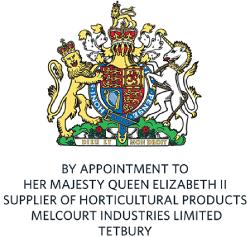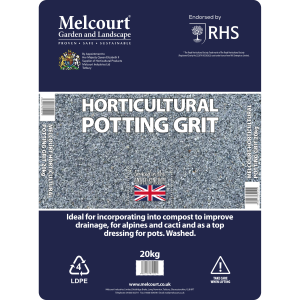Melcourt’s Technical Manager Victoria Wright talks about flies in compost, what they are and what to do about them.
As you move houseplants inside for the winter or begin early seed sowing, you may notice little flies in compost, buzzing around the plants or running across the surface. These small, black flies are fungus gnats, also known as sciarid flies.
Flies in compost: Where are they coming from?
Flies in compost are common in UK gardens, where they are a vital part of the ecosystem. Adult flies are attracted to organic matter, therefore, can become a nuisance for indoor gardening with fewer natural predators and warmer temperatures.
The females lay their eggs on the damp compost surface. It is the compost-dwelling larvae that can sometimes damage seedlings and cuttings. These small (6 mm) white maggots feed on the organic matter present in the compost. If a large enough population occurs, then they will begin to feed on seedling roots and the base of soft cuttings.
All types of compost (growing media) are favourable to fungus gnats, both peat-based and peat-free compost. The adults seek out the combination of warm temperatures, plenty of moisture and the presence of organic matter. The short-lived adults don’t feed but can spread plant diseases.
Flies in Compost: What can I do?
Sciarid flies are attracted to organic matter so they can find their way into bags of compost, typically that have been stored open for a while. Flies in compost are adept at even getting through the tiny air holes in bags.
You may find that once in use, particularly if outside, the flies will disperse quickly or, at the very least, become less of a nuisance. Ensure the compost is stored correctly to avoid the bags becoming attractive to the flies. Melcourt’s peat-free compost packaging advises the ideal storage conditions for compost.

How to prevent flies in compost on houseplants
Flies in compost do not harm established plants. It is vital to check plants brought indoors as house plants (see our houseplant blog from January) or seed sowings for any adults. The adults are difficult to control, so prevention is the best option. Once the plants are inside, consider monitoring for the adults using yellow sticky traps.
Avoid over-watering. Sciarid fly larvae thrive in constantly damp composts; allowing the surface of the compost to dry between waterings or only watering from below can reduce infestations.
If you plan to use SylvaGrow peat-free compost for houseplants, we advise mulching the top of the pots with around 1cm of horticultural grit. This is an off-putting surface for the flies, and it deters them from laying their eggs.
If you are in the unfortunate position of an infestation of the gnat larvae, a nematode treatment can be applied to control the larvae and break the lifecycle of the gnat.




